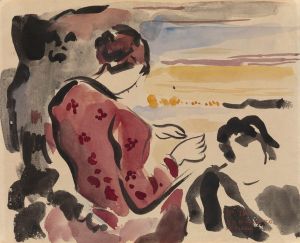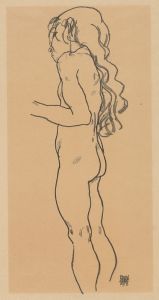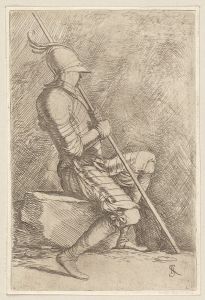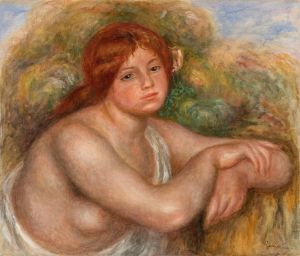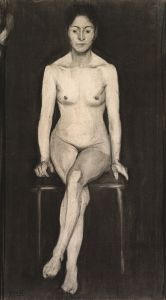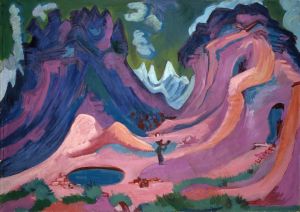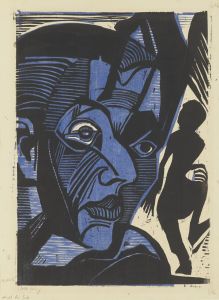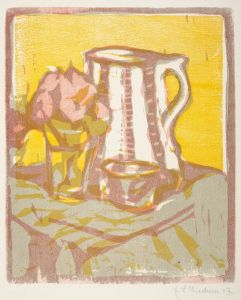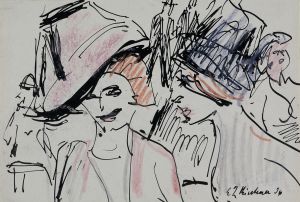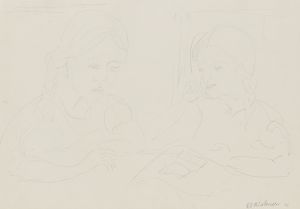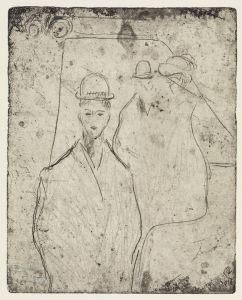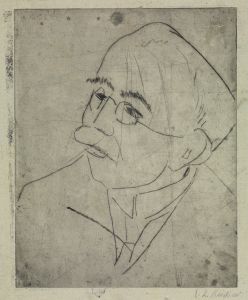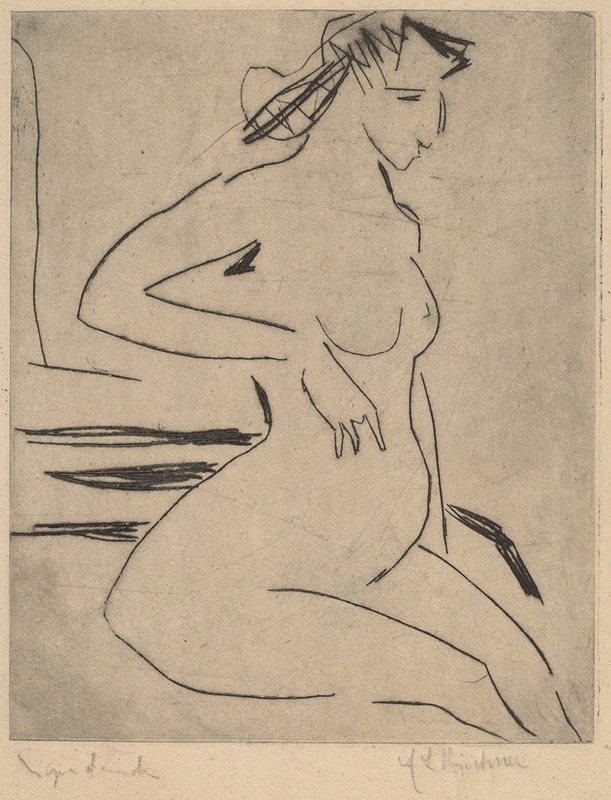
Female Nude Seated
A hand-painted replica of Ernst Ludwig Kirchner’s masterpiece Female Nude Seated, meticulously crafted by professional artists to capture the true essence of the original. Each piece is created with museum-quality canvas and rare mineral pigments, carefully painted by experienced artists with delicate brushstrokes and rich, layered colors to perfectly recreate the texture of the original artwork. Unlike machine-printed reproductions, this hand-painted version brings the painting to life, infused with the artist’s emotions and skill in every stroke. Whether for personal collection or home decoration, it instantly elevates the artistic atmosphere of any space.
Ernst Ludwig Kirchner was a prominent German expressionist painter and one of the founding members of the artist group Die Brücke (The Bridge), which played a pivotal role in the development of modern art in the early 20th century. Kirchner's work is characterized by its bold use of color, dynamic compositions, and a focus on the human figure, often exploring themes of modernity, urban life, and the human condition.
"Female Nude Seated" is one of Kirchner's works that exemplifies his approach to the human form and his expressionist style. Painted during a period when Kirchner was deeply involved with Die Brücke, this piece reflects the group's interest in capturing raw emotion and the essence of their subjects, often through the depiction of nudes. The painting showcases Kirchner's distinctive use of vibrant colors and expressive brushwork, which are hallmarks of his style.
The subject of the painting, a seated female nude, is rendered with a sense of immediacy and vitality. Kirchner's approach to the nude figure was influenced by his desire to break away from traditional academic representations, instead opting for a more direct and unfiltered portrayal. This aligns with the broader goals of Die Brücke, which sought to create a new artistic language that was more in tune with the rapidly changing world of the early 20th century.
Kirchner's nudes often convey a sense of psychological depth and complexity. In "Female Nude Seated," the figure's pose and expression might suggest introspection or contemplation, inviting viewers to consider the inner life of the subject. The use of color in the painting is particularly noteworthy; Kirchner employs a palette that is both bold and harmonious, using contrasting hues to create a dynamic visual impact.
The composition of "Female Nude Seated" is carefully constructed to draw the viewer's eye across the canvas. Kirchner's use of line and form is both fluid and structured, creating a sense of movement and energy. This dynamic quality is a key feature of Kirchner's work and reflects his interest in capturing the vitality of modern life.
Kirchner's exploration of the nude form was not merely an artistic exercise but also a reflection of his broader philosophical and cultural interests. He was influenced by non-Western art, particularly African and Oceanic art, which he admired for its perceived authenticity and directness. This influence is evident in the simplified forms and bold outlines that characterize much of his work, including "Female Nude Seated."
Throughout his career, Kirchner faced numerous challenges, including the impact of World War I and the rise of the Nazi regime, which labeled his work as "degenerate art." Despite these obstacles, Kirchner's contributions to the expressionist movement and his innovative approach to the human figure have left a lasting legacy in the art world.
"Female Nude Seated" remains an important example of Kirchner's work, illustrating his ability to convey emotion and movement through the depiction of the human form. The painting continues to be studied and appreciated for its artistic and historical significance, offering insight into the mind of one of the 20th century's most influential artists.





